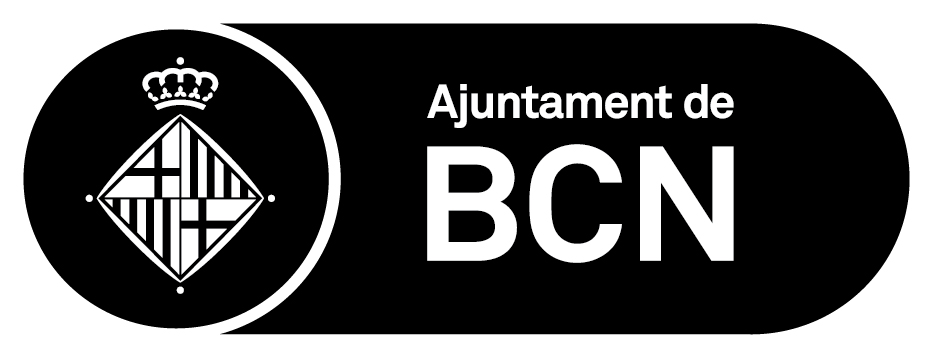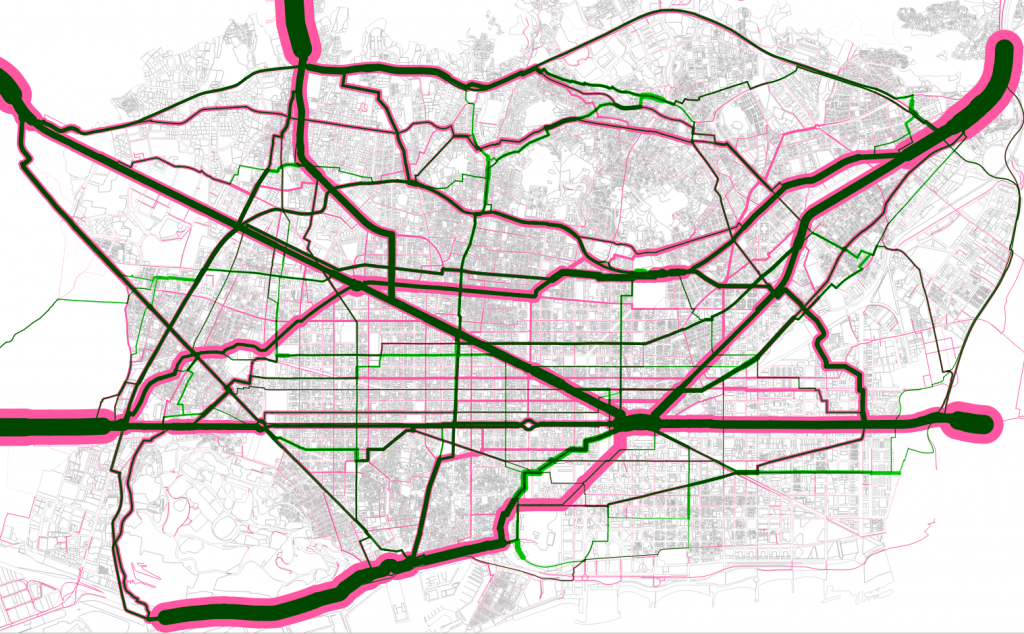In a moment of necessary decarbonization and implementation of strategies for reducing vehicles in urban environments, the new mobility challenges rely either on more sustainable forms of transportation (such as bicycles and other micro-mobility vehicles) or the distribution of goods; both with the common denominator of generating routes that have difficult-to-predict behaviour (on-demand) and modelling.
Specifically, the challenge posed by the Mobility Department of the City Council was to estimate the demand for parcels within the city and, subsequently, design a network of micro-logistic platforms. These hubs, which were to be distributed according to the estimated demand in each neighbourhood, allowed for modal exchange between larger delivery vehicles (vans and trucks) and cargo bikes (which assume the last trip to the end consumer) with the ultimate goal of reducing the considerable impacts on the environment and public health caused by urban freight distribution. For example, in Barcelona, the Urban Mobility Plan 2019-2024 assessed it was responsible for 40% of the city’s congestion and 20% of the emissions.
The main input information for the demand model came from the mobile application that the Barcelona City Council has implemented in recent years (DUM App). This application records the number of vehicles devoted to freight distribution, reported in the parking lots. We crossed this dataset with other information to estimate, on the one hand, the demand generated by shops and offices, and on the other hand, by residents.
In the latter case, we employed statistical data (provided by the Government of Catalonia) to segment e-commerce demand by age and level of education. We inferred the number of delivered packages according to the demographics of each plot, using data from the City Council.
In both cases, the number of parked vehicles recorded in the DUM app has been used as data to train a prediction algorithm for demand, mainly based on decision trees. The micro-hubs network has been sized based on the prediction results, which allowed for estimating the number of packages for each city area (including failed deliveries).
The final solution creates 16 micro-hubs that would absorb 15 million e-commerce deliveries entering the city yearly. Combined with the implementation of zero-emission fleets for last-mile delivery, it would enable a reduction of at least 55% of the trips (made by polluting vehicles inside the city) and up to 70% of emissions associated.
In conclusion, this study opens a path to a deeper understanding of a cutting-edge mobility challenge. It validates the implementation of an effective solution to reduce traffic and air pollution, based on unexplored public data. This prospective study also provides various departments inside the City Council (and other urban stakeholders) with valuable information feeding their decision-making strategies into a possible pilot before city-scale implementation.
The project is framed within the DataCity Challenge whose objective is to solve challenges posed by a public entity (Barcelona City Council) with the participation of innovative companies (300.000 Km/s) and the collaboration of large companies (Ferrovial Servicios) as strategic partners for future commercialization of the solution. Our team has been selected in an open call for startups and leading companies in the field of data analysis within the national ecosystem.
Images
Promoters



